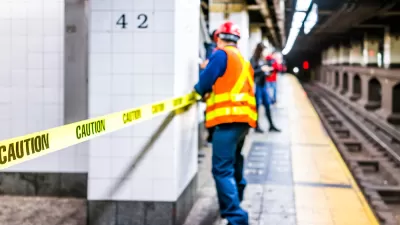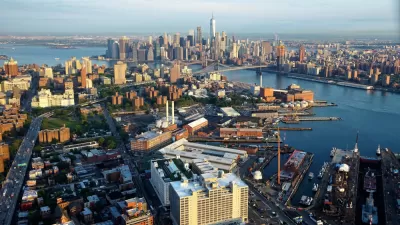It appears that everyone is talking about the impact that sports stadiums have on urban economic development. As soon as one person says they're a terrible idea, another article will retort the benefits brought to a given city.
In this article by the Initiative for a Competitive Inner City, the author looks at both sides of the argument. Sure, public subsides are often required to finance these urban stadiums. Tax breaks, free land, government-subsidized tax-free loans and discounts are routinely offered by cities in order to attract a sports team to build a stadium in their hometown. NYC was able to attract the Nets by offering $511 million in tax exempt bonds. The initial plans included office towers and affordable housing to be built alongside the stadium, but these have since been scrapped due to the economy.
But even without the office towers and condo complexes, is the stadium a worthwhile investment for NYC?
Boston Mayor Tom Menino announced in June that fans had spent $300 million in Boston as a direct result of hometown sporting events the past year. A pennant race and Stanley Cup championship certainly didn't hurt the city's efforts.
The article seeks feedback on the importance of stadiums to urban economic development--and whether these public subsidies are worthwhile. Can stadiums really create "shared value"? If so, how?
Thanks to Amanda Maher
FULL STORY: An Economic Development Case for Building Sports Stadiums—Or Not

Pennsylvania Mall Conversion Bill Passes House
If passed, the bill would promote the adaptive reuse of defunct commercial buildings.

Planning for Accessibility: Proximity is More Important than Mobility
Accessibility-based planning minimizes the distance that people must travel to reach desired services and activities. Measured this way, increased density can provide more total benefits than increased speeds.

World's Largest Wildlife Overpass In the Works in Los Angeles County
Caltrans will soon close half of the 101 Freeway in order to continue construction of the Wallis Annenberg Wildlife Crossing near Agoura Hills in Los Angeles County.

Eviction Looms for Low-Income Tenants as Rent Debt Rises
Nonprofit housing operators across the country face almost $10 billion in rent debt.

Brightline West Breaks Ground
The high-speed rail line will link Las Vegas and the Los Angeles area.

Colorado Bans No-Fault Evictions
In most cases, landlords must provide a just cause for evicting tenants.
City of Costa Mesa
Licking County
Barrett Planning Group LLC
HUD's Office of Policy Development and Research
Mpact Transit + Community
HUD's Office of Policy Development and Research
Tufts University, Department of Urban and Environmental Policy & Planning
City of Universal City TX
ULI Northwest Arkansas
Urban Design for Planners 1: Software Tools
This six-course series explores essential urban design concepts using open source software and equips planners with the tools they need to participate fully in the urban design process.
Planning for Universal Design
Learn the tools for implementing Universal Design in planning regulations.


























